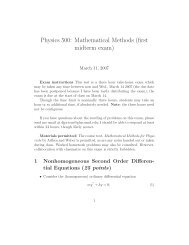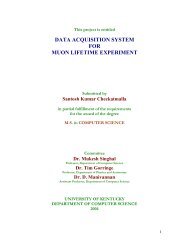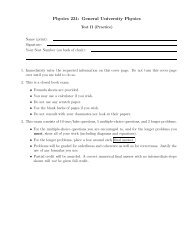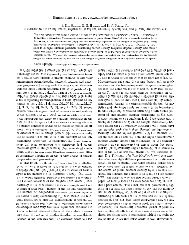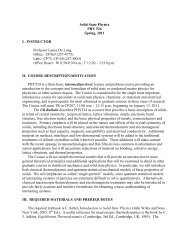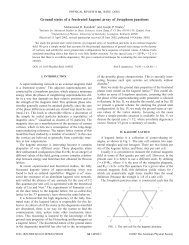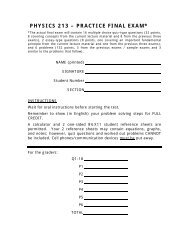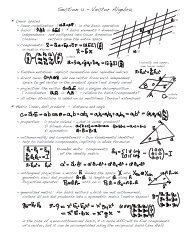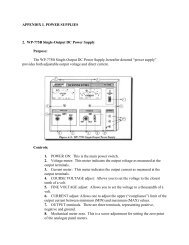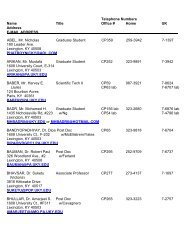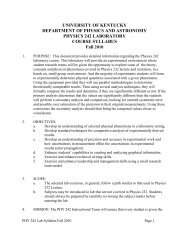2011-06-16 HW 2.pdf
2011-06-16 HW 2.pdf
2011-06-16 HW 2.pdf
You also want an ePaper? Increase the reach of your titles
YUMPU automatically turns print PDFs into web optimized ePapers that Google loves.
<strong>HW</strong> #2<br />
Assigned Wednesday June <strong>16</strong><br />
Due: Monday June 20 Recitation 9AM
Problem 1<br />
A particle (charge = +40 µC) is located on the x axis at the<br />
point x = -20 cm, and a second particle (charge = -50 µC) is<br />
placed on the x axis at x = +30 cm. What is the magnitude of<br />
the total electrostatic force on a third particle (charge = -4.0<br />
µC) placed at the origin (x = 0)?<br />
a. 41 N<br />
b. <strong>16</strong> N<br />
c. 56 N<br />
d. 35 N<br />
e. 72 N
Prob. 23-36<br />
Problem 2<br />
A uniformly charged rod of length L and total charge Q lies<br />
along the x-axis as shown in the figure.<br />
(a) Find the components of the electric field at the point P<br />
on the y-axis a distance d from the origin.<br />
(b) What are the approximate values of the field<br />
components when d >> L? Explain why you would<br />
expect these results.
Problem 3<br />
Prob. 23-10<br />
Two small metallic spheres, each of<br />
mass m = 0.200g are suspended as<br />
pendulums by light strings of length L<br />
as shown in the figure. The spheres are<br />
given the same charge of 7.2 nC, and<br />
they come to equilibrium when each<br />
string is at an angle of θ = 5.00 o with<br />
the vertical.<br />
How long are the strings?
Problem 4<br />
Prob. 23-49<br />
A proton moves at 4.5 x 10 5 m/s in the horizontal direction. It enters a<br />
uniform vertical electric field with a magnitude of 9.60 x 10 3 N/C.<br />
Ignoring any gravitational effects, find<br />
(a) the time interval required for the proton to travel 5.00 cm<br />
horizontally<br />
(b) its vertical displacement during the time interval in which it travels<br />
5.00 cm horizontally<br />
(c) the horizontal and vertical components of its velocity after it has<br />
traveled 5.00 cm horizontally.



